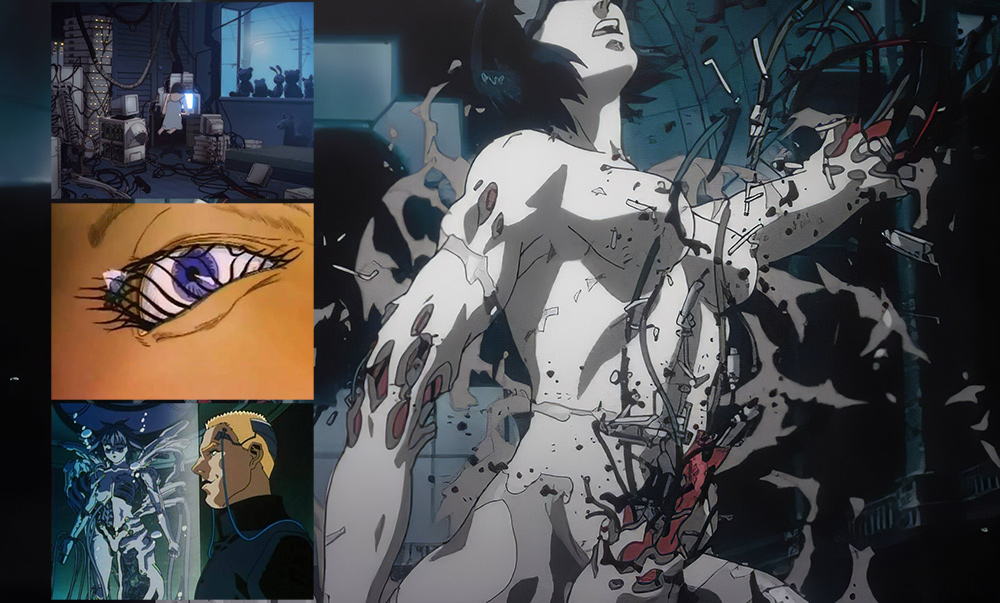This is a short list of Japanese anime and OVA and Western animated films and television shows in the cyberpunk genre, sorted by release date. Each title includes a set of relevant science fiction themes, a brief synopsis and what value the film may have for viewers.
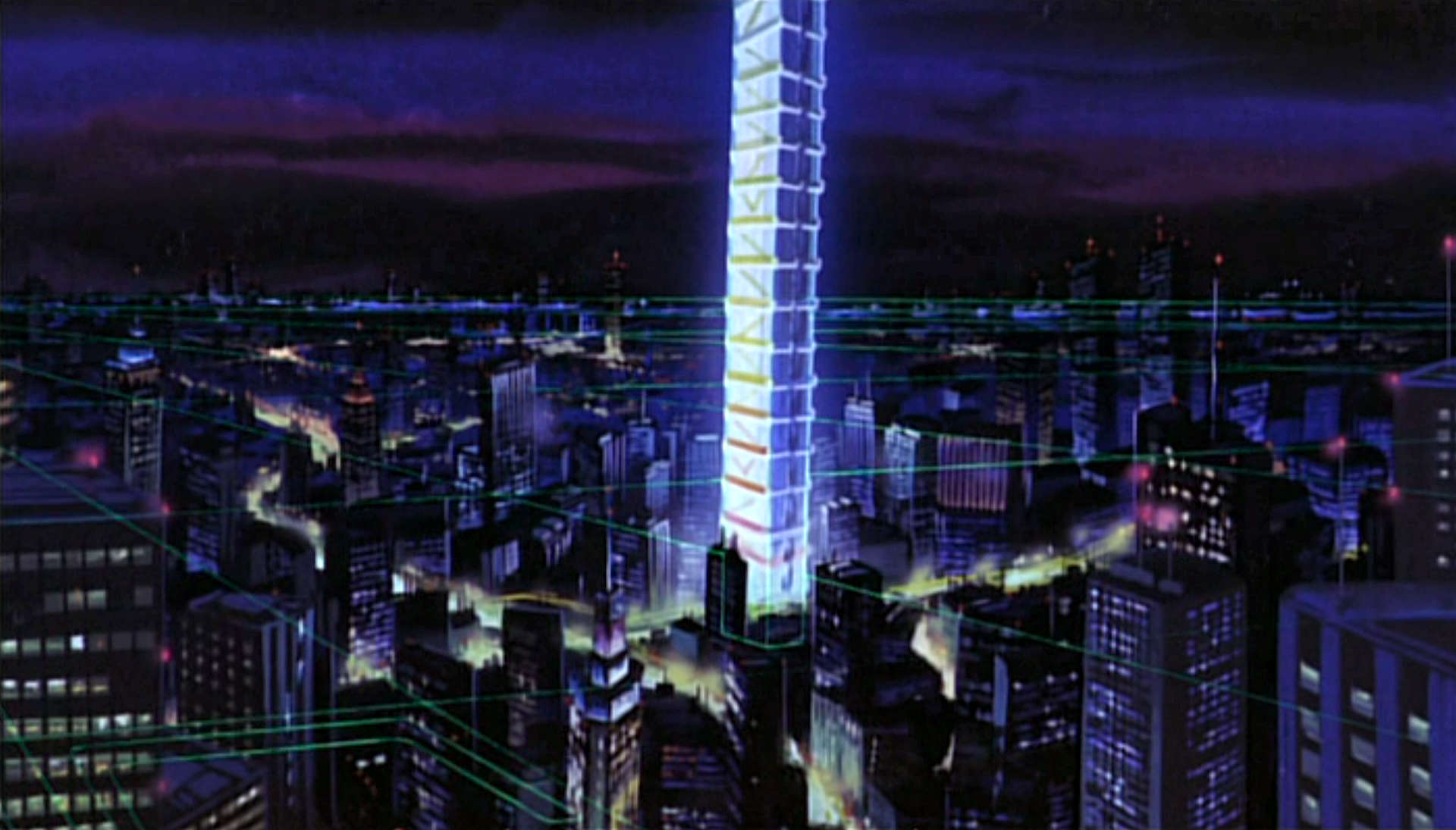
Ai City | Date Released: 1986 | Director: Kōichi Mashimo | Trailer
Themes: Psionics, Authoritarianism
Synopsis: This is an action-heavy anime from the same director as Dominion Tank Police, with a heavy use of psychic “technology” as its primary sci-fi novum. While some may argue that this component places Ai City more in the science fiction, or even fantasy, genre, the fact that Akira (which also heavily features psychic abilities) is so well regarded as cyberpunk should ensure that Ai City is also included. The soundtrack is rather dated and the animation is typical of early 80’s anime, but there are some scenes that have good back drops, if not cinematography.

Bubble Gum Crisis | Date Released: 1987-1991 | Director: Katsuhito Akiyama | # of Episodes: 8 | Trailer
Themes: Cybernetics, Robotics, Mechanised Urban Law Enforcement
Synopsis: Set in 2032 Tokyo, this OVA follows “Knight Sabers” an all female mechanised squad that battles “boomers”, the cyborg products of the nefarious Genom megacorporation. While dated now and clearly inspired by various mecha and cyberpunk franchises that came before it, it features solid 80’s Japanese animation techniques and matching score. The series was influential in its narrative framework and genre tropes to numerous cyberpunk animes that followed.
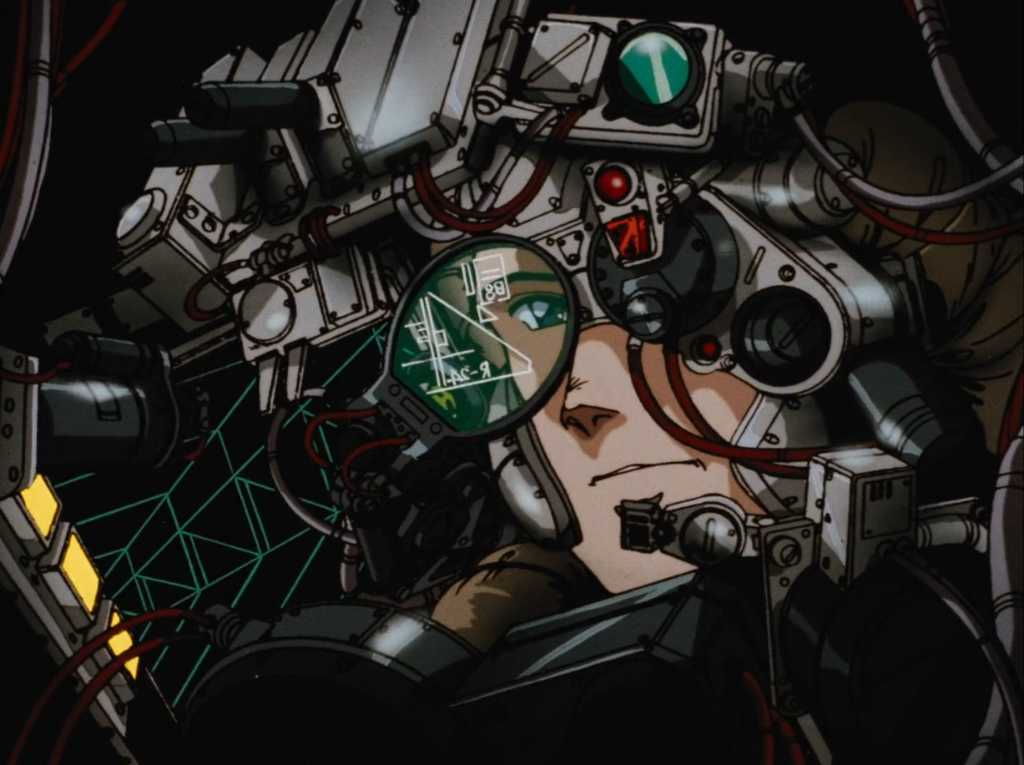
Metal Skin Panic MADOX-01 | Date Released: 1987 | Director: Shinji Aramaki | Trailer
Themes: Robotics, Military-Industrial Complex
Synopsis: This OVA is more of a mecha theme than cyberpunk, however being set in the near future (from 1987) and with a plot focused on a military robotics suit that is lost in Shinjuku, the aesthetics and urban context push this into the cyberpunk genre. A young mechanic winds up trapped inside the “MADOX-01” test mecha and battles across Tokyo as the army and a fanatical tank commander attempt to destroy the suit, and him, as a terrorist threat. While only 40 minutes long, MADOX-01 has cinematography and animation that puts most modern anime to shame. Director Shinji Aramaki is worth noting as he also directed most of the Appleseed animes and provided the mecha designs for Bubblegum Crisis, dozens of other anime and the spinner design in Blade Runner Black Out 2022. The plot is basic and many scenes are borderline comedic with the teenaged protagonist trapped in the MADOX mecha suit ordering a bento in a 7-11 he just crashed into and filling it with diesel in a petrol station. Worth watching for the visuals alone, there are some gorgeous animations and the designs of the robotics and military hardware are inspired.

RoboCop: The Animated Series | Date Released: 1988 | Director: Bill Huton & Tony Love | # of Episodes: 12 | Trailer
Themes: Mechanised Urban Law Enforcement, Cyborgs, Robotics, Transhumanism, Militarisation of Cyborgs, Cybernetics
Synopsis: “RoboCop: The Animated Series” is the animated adaptation of the popular “RoboCop” film franchise. The series continues the story of Alex J. Murphy, a police officer turned into a powerful cyborg crimefighter known as RoboCop. With his partner, Officer Anne Lewis, RoboCop fights against a variety of futuristic criminals and threats, striving to uphold justice and order in the crime-ridden city of Old Detroit. The animated series captures the essence of the original movies, blending action, cyberpunk, science fiction, and the exploration of the human-machine relationship.

Akira | Date Released: 1988 | Director: Katsuhiro Otomo | Trailer
Themes: Authoritarianism, Psionics, Mechanised Urban Law Enforcement
Synopsis: This film is borderline fantasy compared to many of the others in this list because of its heavy use of psychic “powers” and many of the political and post-war themes may be inaccessible to non-Japanese audiences. However, it has arguably amongst the best hand-drawn animation quality of any animated film, period, and its late 70’s/early 80’s inspired imagery of futuristic Japan has defined the aesthetics of the cyberpunk genre.
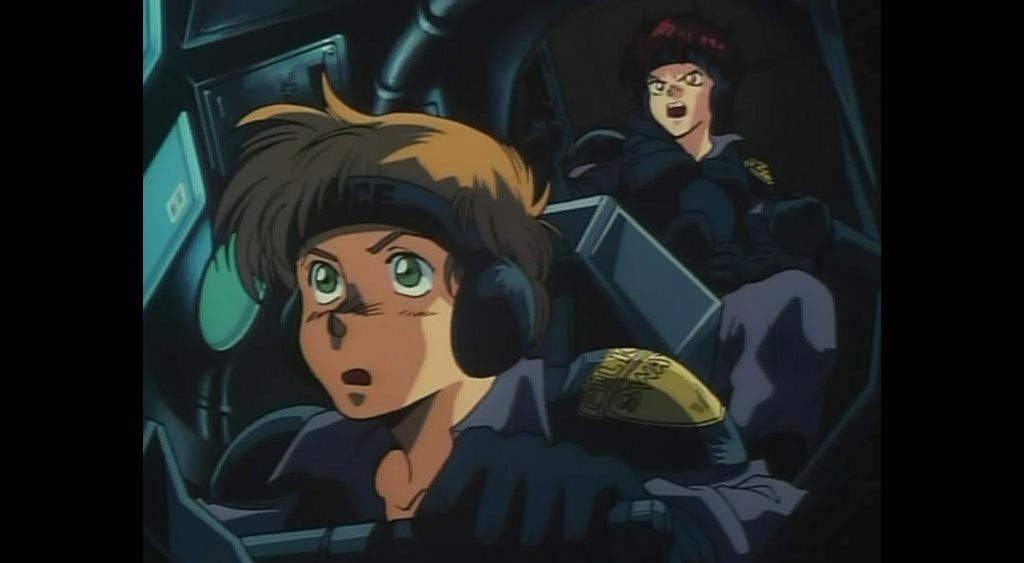
Dominion Tank Police | Date Released: 1988-1989 | Director: Kôichi Mashimo | # of Episodes: 4 | Trailer
Themes: Cybernetics, Post-Apocalyptic, Mechanised Urban Law Enforcement
Synopsis: This OVA is a prequel to the manga, Dominion, written by Shirow Masamune, of Ghost in the Shell fame. You will find many similarities in technology design with that franchise, however the OVA is more humorous and campy than Ghost in the Shell (1995). The short OVA deals with the efforts of a young female rookie, newly joined to the Tank Police of the fictionalm, polluted metropolis of Newport, as she and her squad battle a comical band of cyborgs. This offers little beyond the cyberpunk aesthetic and is only worth watching if you are a big fan of Masamune.
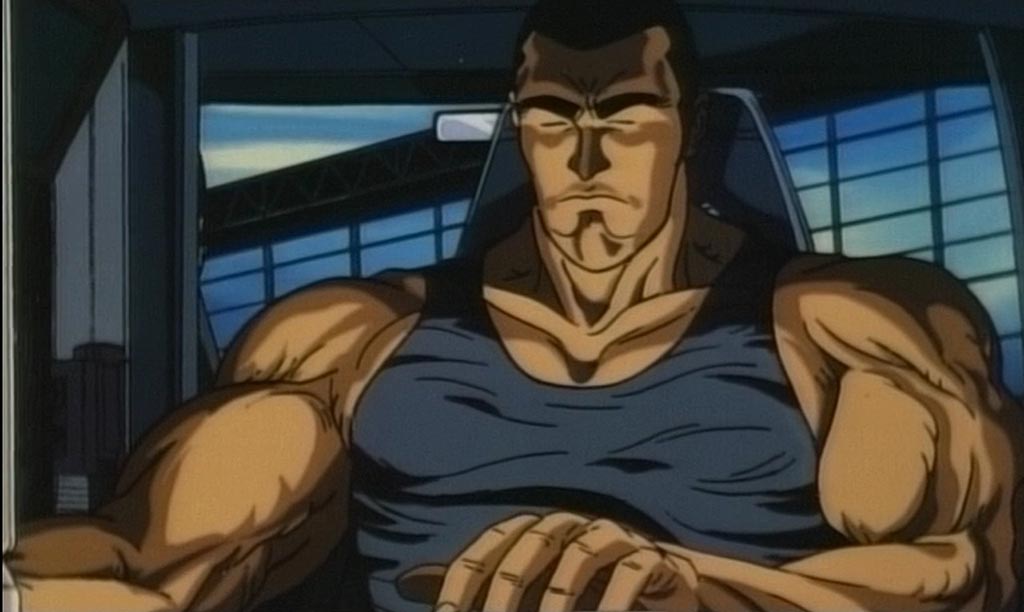
Angel Cop | Date Released: 1989 | Director: Ichirō Itano | # of Episodes: 6 | First Episode [YouTube]
Themes: Cybernetics, Terrorism, Mechanised Urban Law Enforcement
Synopsis: While this OVA introduces far too many supernatural elements to be considered a hard cyberpunk series, it packages those fantastical components into a science fiction package with psionics explained as a genetically manipulatable trait. The first two episodes in particular are very reminiscent of the Ghost in the Shell film, with a crack team of anti-terrorist police working against what they believe to be a right wing terrorist organisation. However, while the plot becomes slightly too complex for its format with numerous political twists, at its heart it is an ultra violent military-themed anime that includes cyborgs and all manner of new military technologies that cyberpunk fans may enjoy.
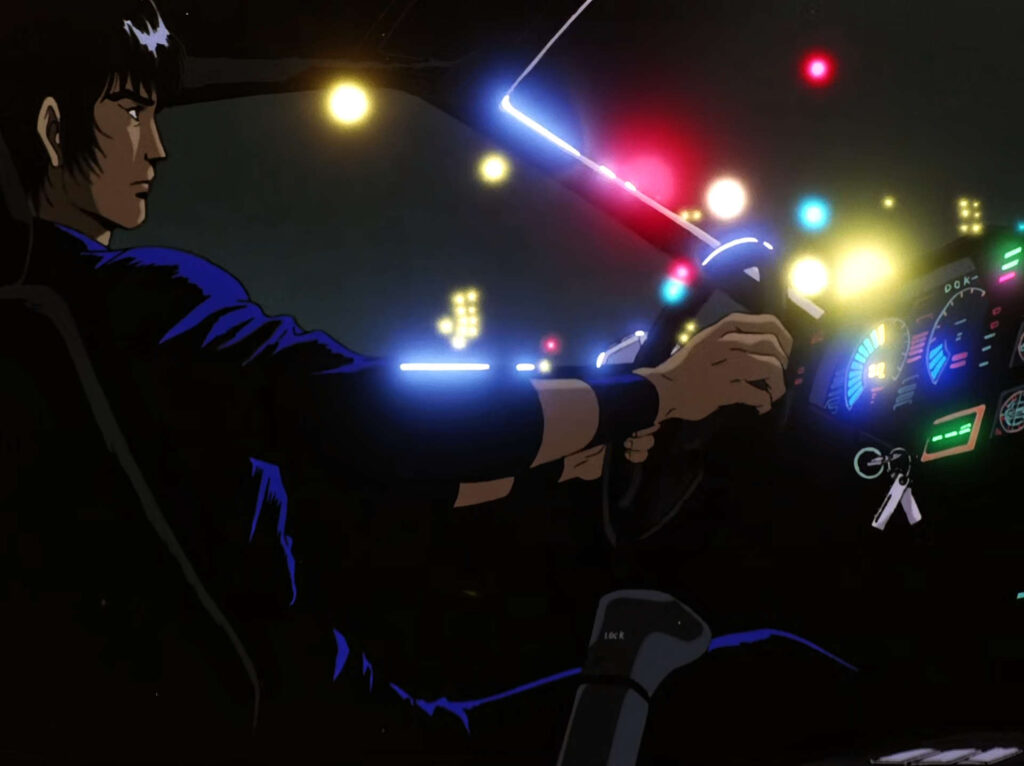
Goku Midnight Eye | Date Released: 1989 | Director: Yoshiaki Kawajiri | # of Episodes: 2 | Trailer
Themes: Cybernetics, Transhumanism
Synopsis: Goku Midnight Eye is a two part OVA with surprisingly high quality animation that rivals big budget anime movies. With the same director as Cyber City OEDO 808 you can expect big metropolitan backdrops and cybernetic upgrades and lots of action. With a private investigator as a protagonist, an abundance of neon-lit Japanese night shots and multiple femme fatales; this is a must watch for cyberpunk anime fans. It also features a (hopefully) one of a kind (and grotesque) hybrid motorcycle cyborg stripper.

A.D. Police Files | Date Released: 1990 | Director: Takamasa Ikegami & Akira Nishimori | # of Episodes: 3 | Opening
Themes: Cybernetics, Man-Machine Romance, Mechanised Urban Law Enforcement
Synopsis: A collection of loosely-related original video animations with heavy cyberpunk themes. Graphic in both violence and sex, despite the seemingly low-brow nature of the episodes, each deals with the unique psycho-sexual dynamics that may occur alongside cybernetic modification, the use of androids in sexual labour and other topics that many Hollywood cyberpunk movies only lightly touch upon. This is related in setting and episodic narratives to Bubblegum Crisis.
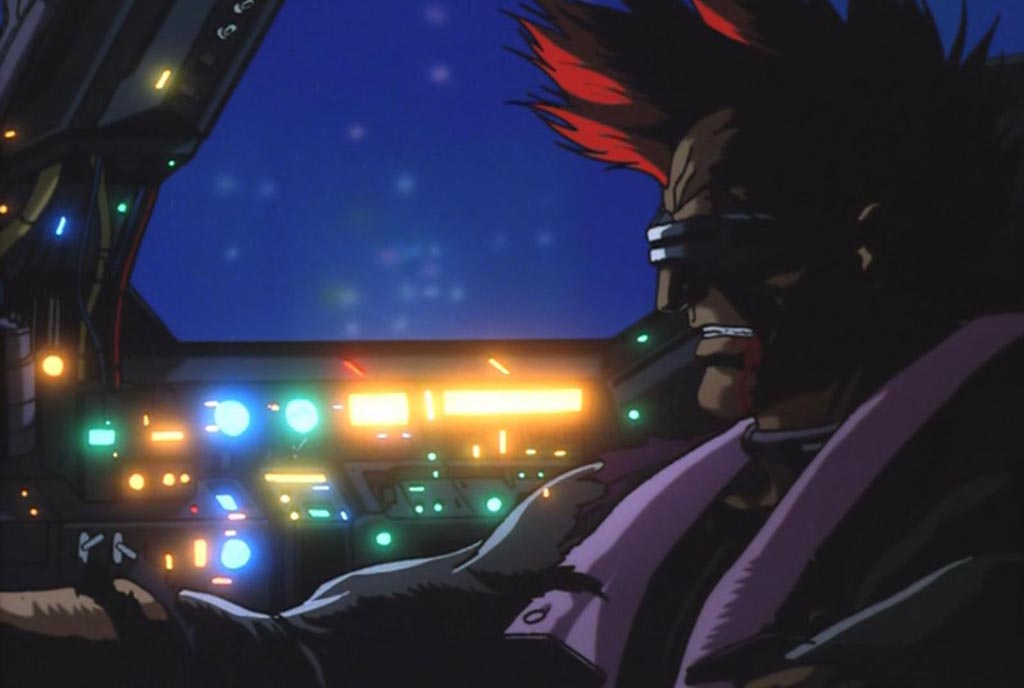
Cyber City OEDO 808 | Date Released: 1990 | Director: Yoshiaki Kawajiri | # of Episodes: 3 | Trailer
Themes: Computer crime, Automation, Transhumanism
Synopsis: More style over substance, this set of three animated episodes follow the same group of criminals turned government hitmen as they combat various cybernetically and genetically enhanced foes. With the same director as Goku Midnight Eye, it manages to hit all the aesthetic tropes and is entertaining enough to warrant a viewing if you are a cyberpunk fan.
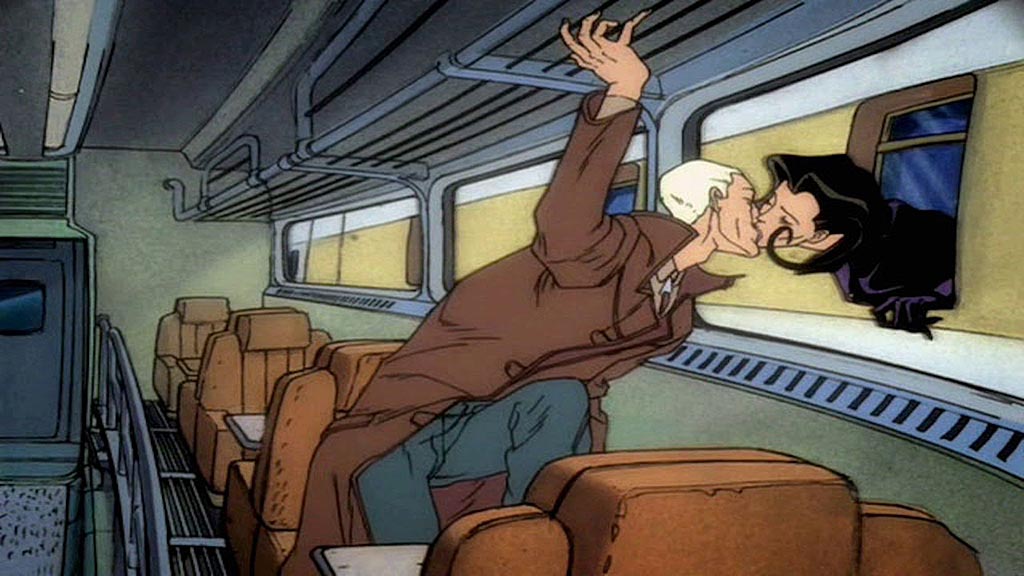
Aeon Flux | Date Released: 1991 | Director: Peter Chung | # of Episodes: 21 | Opening
Themes: Transhumanism, Genetic Modification, Surveillance States
Synopsis: Peter Chung’s highly influential animated series for MTV’s Liquid Television. Divided into two formats, the earlier episodes had minimal if any dialogue, were shorter in length, and focused on different scenarios where the protagonist meets her demise during fantastical action-oriented missions. Later, the length of the episodes increased and more world building and character development was provided. While Aeon Flux may be more in line with science-fiction, if not fantasy, than it is cyberpunk, its aggressive aesthetics, transhumanist themes and philosophical depth make this worth watching.
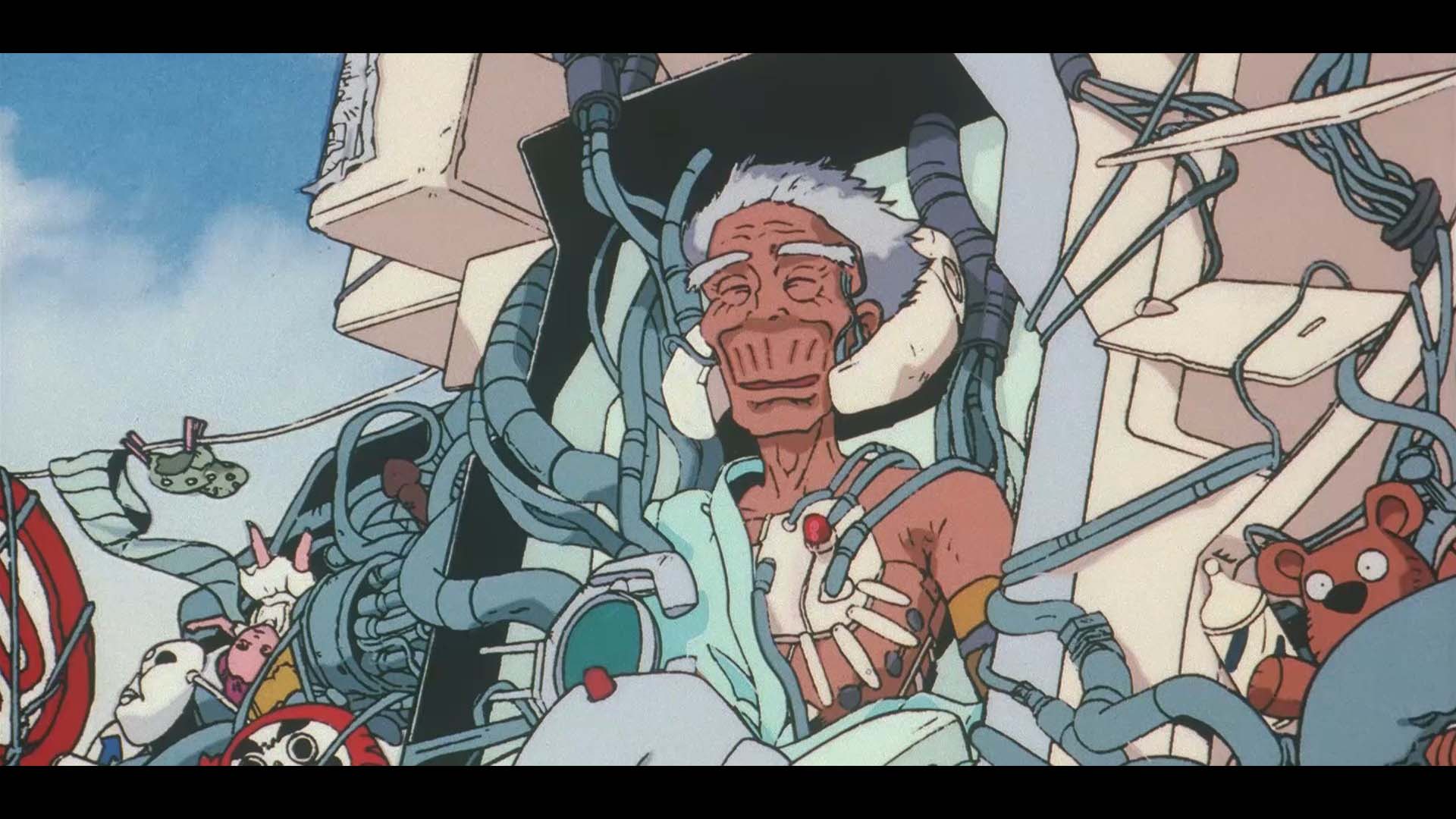
Roujin Z | Date Released: 1991 | Director: Hiroyuki Kitakubo | Trailer
Themes: AI, Aging Population, Elderly care, Ethics
Synopsis: In a near-future society, “Roujin Z” introduces the Z-001 medical bed, designed for comprehensive elderly care. However, when an elderly man unwittingly becomes the test subject, the narrative takes a turn, unveiling complex ethical dilemmas and unexpected consequences. This movie offers a unique take on the challenges of an aging population in a high-tech society and the consequential ethical dilemmas. With a bit of humor and social commentary, “Roujin Z” provides a thought-provoking exploration of these complex issues.
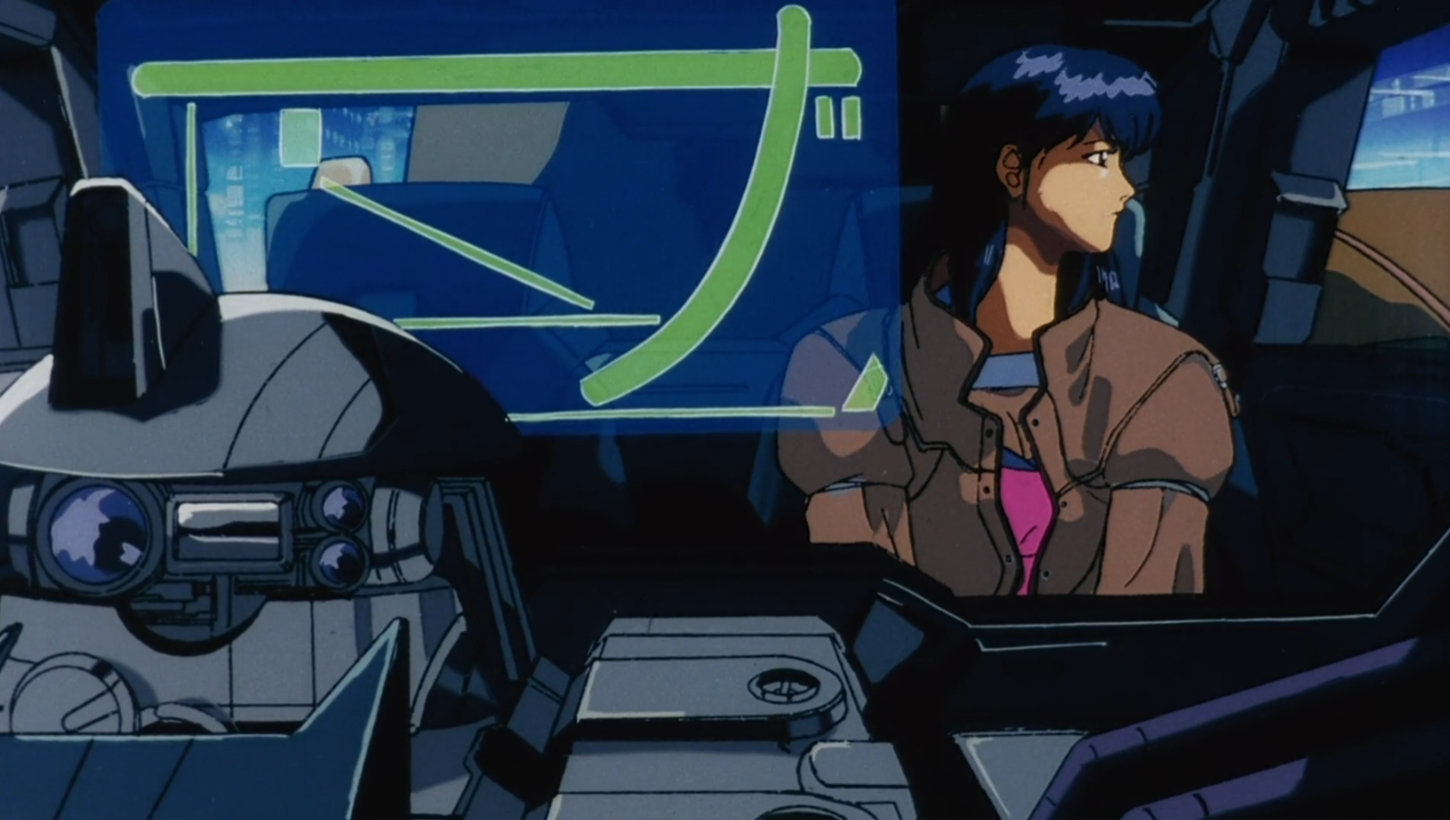
Silent Möbius | Date Released: 1991 | Director: Kazuo Tomizawa | # of Episodes: 1 | Trailer
Themes: Mechanised Urban Law Enforcement, Accelerated Urbanisation
Synopsis: Based on a manga, this hour long one-off OVA blends supernatural elements in a highly mechanised, cyberpunk version of Tokyo set in 2028. While the supernatural elements are given a scientific explanation, the narrative is more fantastical than science fiction. While I would consider the plot quite superficial, the animation quality, the designs, especially the costumes, mechanised vehicles and architecture, and in particular, the illustrations and painting work for the background are all very well-done. Any cyberpunk fan or artist looking for aesthetic inspiration will enjoy this short OVA for those elements alone.

8 Man After | Date Released: 1993 | Director: Yoriyasu Kogawa & Sumiyoshi Furakawa | # of Episodes: 4 | Full Movie
Themes: Cybernetics, Urban Dystopia, Man-Machine Romance, Corporatism
Synopsis: 8 Man was a Japanese TV show from the 1960s that revolved around an android who assisted police in fighting crime. Together with Astro Boy, 8 Man as a franchise was responsible for establishing many of the crime-fighting robot tropes that audiences saw later in Kamen Rider, and Hollywood’s RoboCop. In 1993, 8 Man was given a 4 episode OVA reboot, except now, set in a dystopic near future New York City overrun with cybernetically-enhanced gangs, 8 Man uses his super speed and strength to violently disarm, and often graphically kill, criminals. Rather than being an android, when a private detective is left for dead by a cyborg criminal, a scientist rebuilds his body and transplants his mind into an artificial brain, giving him new life as the 8 Man to fight other cybernetically enhanced criminals on their own terms. Every cyberpunk trope one can think of is present in this movie, including nefarious mega corporations, corruption, wide-spread crime and overpopulation, cybernetics used for violence and crime, and there’s an excellent electronic original sound track to match. The animation quality and direction is not at the top levels of 90’s anime but it holds up with today’s current crop of low budget CGI-assisted animation. If you want textbook cyberpunk anime, 8 Man After is what you are looking for.

GUNNM / Battle Angel Alita | Date Released: 1993 | Director: Hiroshi Fukutomi | # of Episodes: 2 | Trailer
Themes: Cybernetics, Transhumanism, Post-Apocalyptic
Synopsis: A condensed preview of the first two chapters of the manga, but entirely watchable as a standalone. A robot surgeon-clandestine bounty hunter finds and rebuilds a discarded young female cyborg who turns out to be more than she seems. The dyadic opposition of rich versus poor is shown in this franchise with this OVA taking place on the planet which is used as a dumping ground and source of human and natural resources by a floating citadel. Well directed and animated with a simple, but compelling narrative set in a well-developed post-apocalyptic urban setting.

Armitage III | Date Released: 1995 | Director: Hiroyuki Ochi | # of Episodes: 4 | Trailer
Themes: Terrorism, Transhumanism, Robotics
Synopsis: A Japanese OVA that is also available as a re-cut film, it follows a detective from Earth’s transfer to a Metropolitan Martian colony with a plotline surrounding androids that have integrated into society without humanity’s knowledge. There are some excellent technology and architecture designs in this OVA, and in general the animation, soundtrack and art style are all high quality. The overall quality of this short series is more in line with the excellent Ghost in the Shell film, than the Stand Alone Complex anime TV series. A relevant cyberpunk theme is the characters’ interest in vintage technology. For the most part though this OVA is a rehash of themes seen in Do Androids Dream of Electric sheep, but delivered in a bombastic anime package. Interestingly, the human-android fertility concept introduced here is quite similar to the plot line in Bladerunner 2049. It’s aesthetic is highly referential of Kojima’s adventure game: Policenauts (1994). Well worth checking out due to its high production quality and world building.
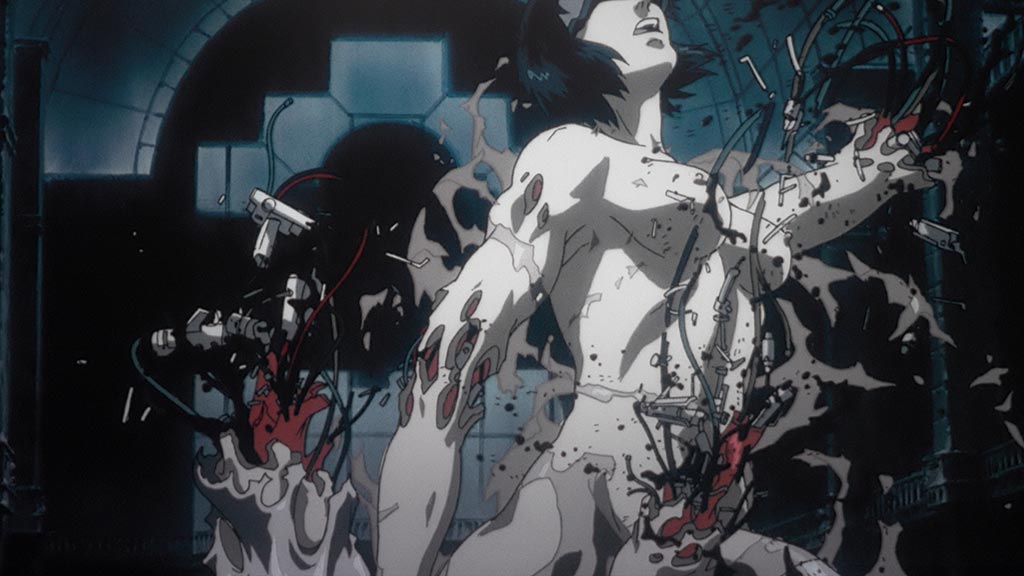
Ghost in the Shell | Date Released: 1995 | Director: Mamoru Oshii | Trailer
Themes: Artificial Intelligence, Cybernetics, Transhumanism, Mechanised Urban Law Enforcement
Synopsis: A masterful piece of filmmaking, Oshii managed to create both an aesthetically gorgeous and a deeply meaningful film out of rather superficial source material. Anyone who is a fan of cyberpunk or who has an appreciation for film should watch this movie. The animation quality, soundtrack, cinematography, and poignant critique of postmodern society still have few equals to this day in the genre.
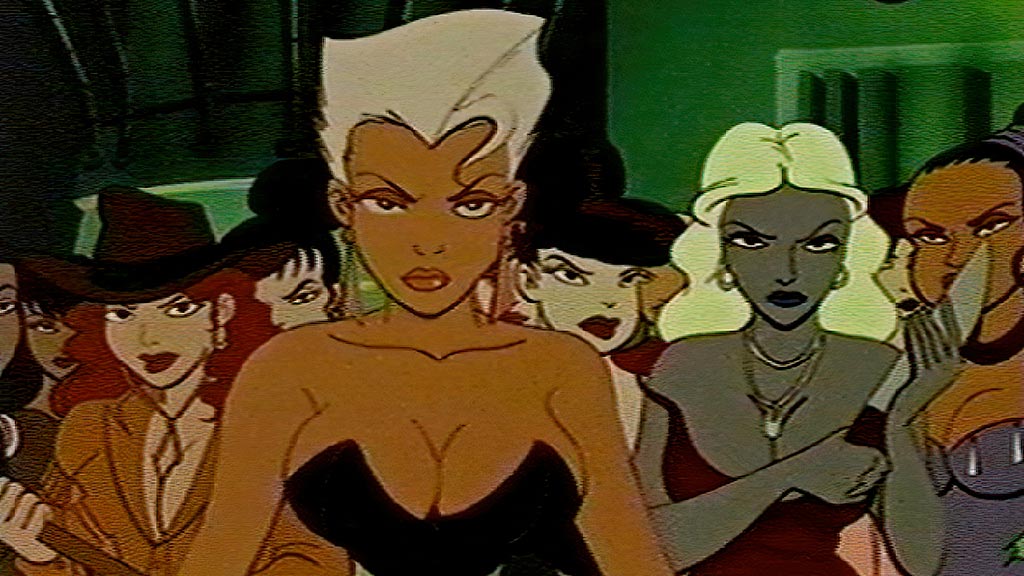
Spicy City | Date Released: 1997 | Director: Various | # of Episodes: 6 | First Episode [YouTube]
Themes: Virtual Reality, Globalisation, Technology Addiction, Clones, Robotics
Synopsis: A HBO animated mini-series created by and produced by Ralph Bakshi. Bakshi was well known for his adult, sexually-themed American animation films such as Fritz the Cat. The opening title song of Spicy City is reminiscent of Twin Peaks and voice over narration in some episodes lends to a noir aesthetic. Each of the six, somewhat racy, episodes has a discrete story line with its own director and deals with life in a large metropolis in the near future. The animation style may turn some off, as it looks like a 90’s Saturday morning cartoon, but the content and story lines are actually quite adult and reasonably well-written. The first episode “Love is a Download” features a satirical look at online dating aided by virtual reality, yet outside of that context plays with very relevant current themes of internet addiction and the kind of escapism many people today engage with using their online personas. While episode two is almost completely supernatural with no cyberpunk themes, the third is a noir detective caper involving clones that should appeal to any Blade Runner fans. Episode five is interesting in that it explores various cybernetic and virtual sex workers, and their use by criminals to extract information from clients. This is an overlooked, yet highly relevant for today, series any cyberpunk fan should check out.

Serial Experiments Lain | Date released: 1998 | # of Episodes: 13 | Trailer
Themes: Hyperreality, Techno-Psychosis
Synopsis: A non-linear and abstract anime mini-series revolving around a young middle class Japanese girl and her forays into “The Wired” a global communications network not dissimilar to the internet. Atmospheric, well-animated, light on action, and deep in sub-text, this show will not be for everyone but has significant value for those who like challenged to think. Worth watching for the atmosphere and aesthetic and if you are a fan of abstract anime such as Tenshi no Tamago (1985).
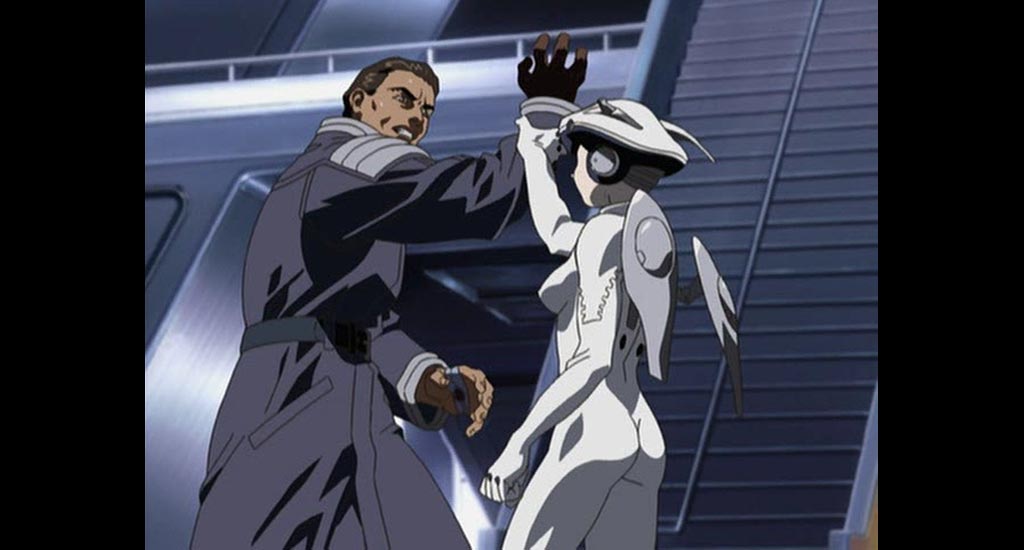
Armitage: Dual Matrix | Date Released: 2002 | Director: Katsuhito Akiyama | Trailer
Themes: Robot rights, Cybernetics, Automation, Cloning
Synopsis: A sequel to Armitage III that takes several years after the events of that OVA. Like Ghost in the Shell Innocence, the animation, soundtrack and overall quality of this film is inferior to the original. The film deals with a
Stand out cyberpunk elements include a futuristic Chicago, the impact of automated vehicles in urban areas and the rights of sentient robots in a human-governed society. Worth viewing only if you are a fan of the original Armitage III OVA or you are a hardcore cyberpunk fan that wants to watch them all.

Texhnolyze | Date Released: 2003 | Director: Hiroshi Hamasaki | # of Episodes: 22 | Trailer
Themes: Cybernetics, Post-Apocalyptic
Synopsis: This anime series is dark, violent and at times quite slow. It is more style over substance and doesn’t have much dialogue or things to say as far as future-forward science fiction goes. However, if you like anime with strong atmosphere and a typical male protagonist development arc, this series may be interesting for you; particularly if you enjoy cybernetic themes. The main character is a poorly performing prize fighter who is left disabled and later empowered by the gift of cybernetic limbs, which he uses in fights with various organised crime syndicates in a post-apocalyptic underground city known as Lux.

The Animatrix | Date released: 2003 | Director: Various |# of Episodes: 9 | Trailer
Themes: Robotics, Artificial Intelligence, Virtual Reality
Synopsis: An anthology of short animated films, the quality of each title and its relevance to the cyberpunk genre varies. Notably the shorts Beyond and A Detective Story have strong cyberpunk themes and are both visually and thematically creative. Those two alone will appeal to any cyberpunk fan and the rest of the shorts are all worth viewing at least once if you are a fan of The Matrix.
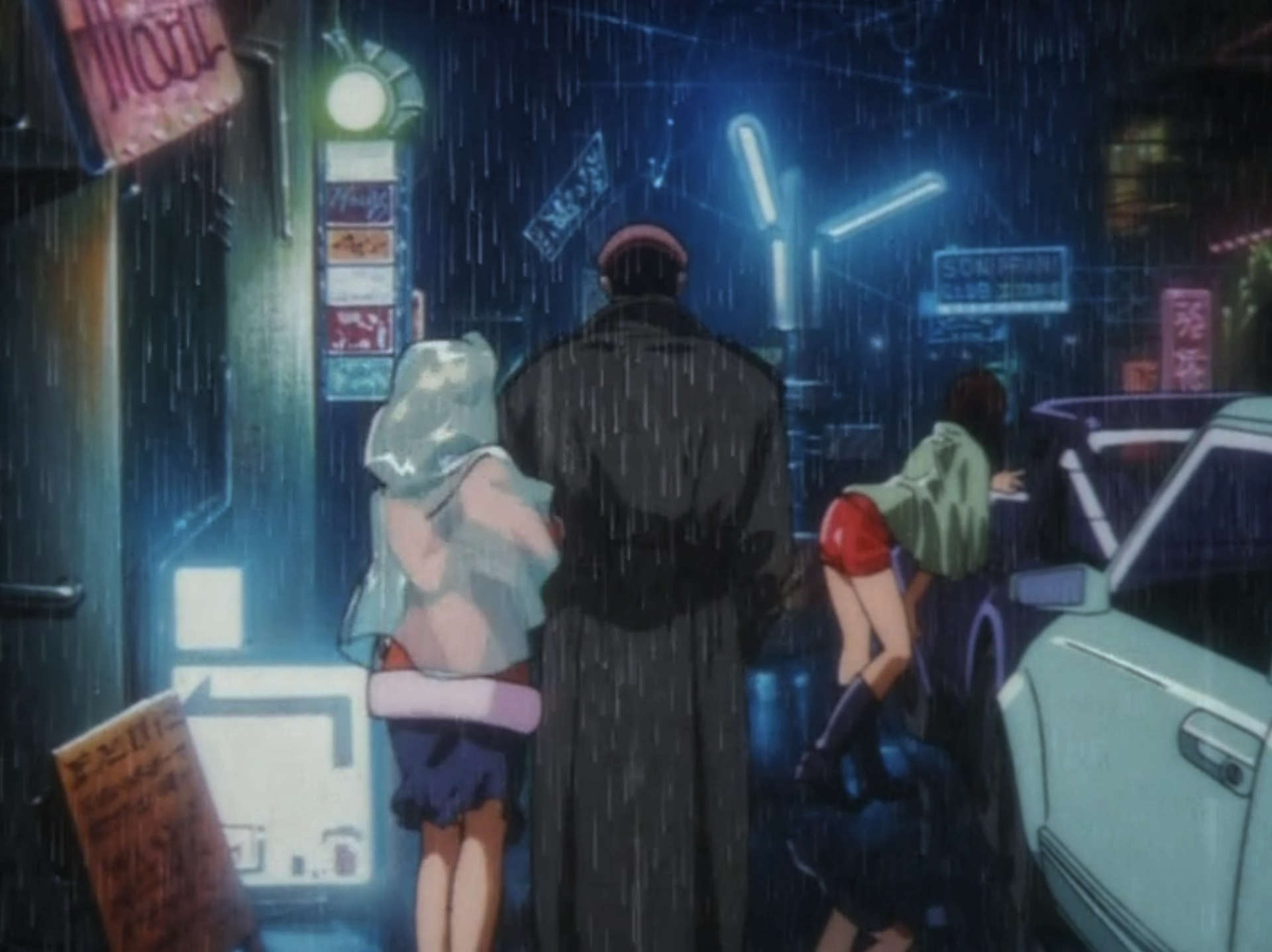
Parasite Dolls | Date Released: 2003 | Director: Kazuto Nakazawa and Naoyuki Yoshinaga | # of Episodes: 3 | Trailer
Themes: Artificial Intelligence, Robotics, Terrorism, Conspiracy, Urban Decay
Synopsis: The final installment in A.D. Police’s cyberpunk spin-off of Bubble Crisis. The A.D. Police serve a similar function as Deckard’s Blade Runner division or Junker HQ in Kojima’s Snatcher – neutralising rogue androids. Surprisingly, Parasite Dolls, which consists of three interconnected stories, has an engaging and even cerebral narrative relative to other anime in this list. It is far more developed than A.D. Police, but continues on several of its themes, particularly the effect of long term servitude on androids; and it doesn’t rely on non-stop graphic violence or action; though it has both in spades. Parasite Dolls also features some of the most novel synthetic lifeform designs in this list while also including pretty much every genre trope there is. This is well worth a watch for fans of cyberpunk or anime alike.
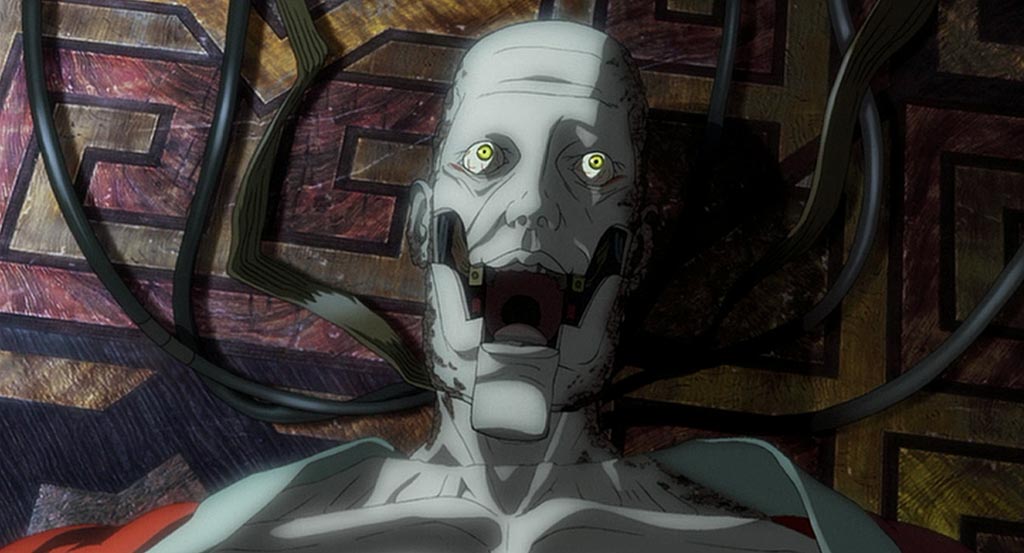
Ghost in the Shell Innocence | Date Released: 2004 | Director: Mamoru Oshii | Trailer
Themes: Transhumanism, Cybernetics, Mechanised Urban Law Enforcement
Synopsis: An extremely disappointing sequel to the original film in nearly all metrics except action choreography. Lacking depth and with an over-reliance on computer animation which has not held up well over time, the film is shallow thematically and weak visually. While this film cannot hold a candle to the original masterpiece, there are a few standout scenes that fans of the franchise and cyberpunk may find value in.
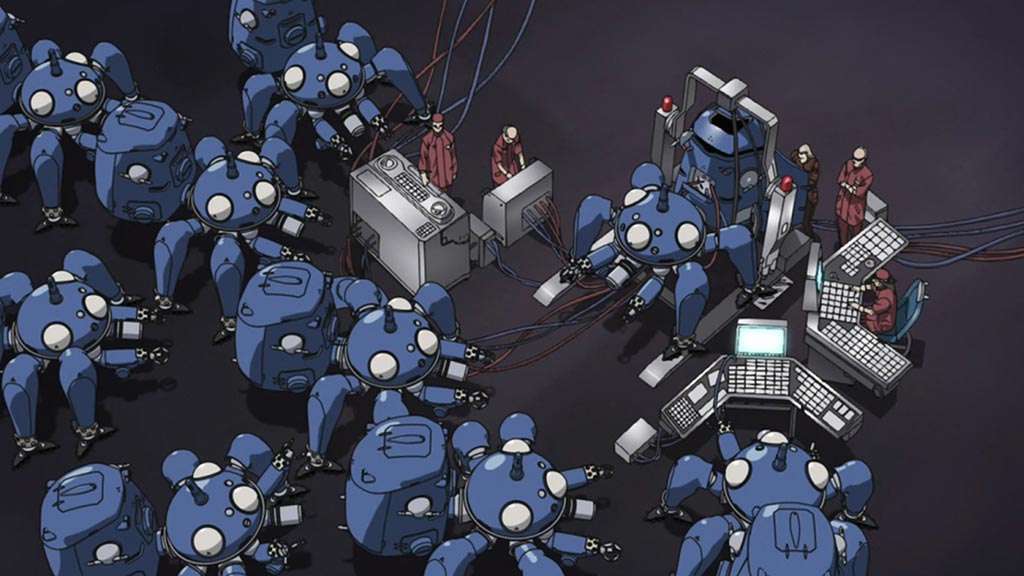
Ghost in the Shell Stand Alone Complex | Date Released: 2004 | Director: Various | # of Episodes: 52 | Trailer
Themes: Transhumanism, Surveillance, Artificial Intelligence, Cybernetics, Mechanised Urban Law Enforcement
Synopsis: Not to the same standard as the original 1995 film and its reuse of many of that film’s aesthetics and iconic scenes may be disappointing for some. The plot lines for the two seasons are considerably dumbed down compared to the thematic depth of the 1995 film. However, there is plenty of cyberpunk content here, particularly if you are a fan of anime or the Ghost in the Shell franchise. For those that aren’t, this series may not be as compelling.
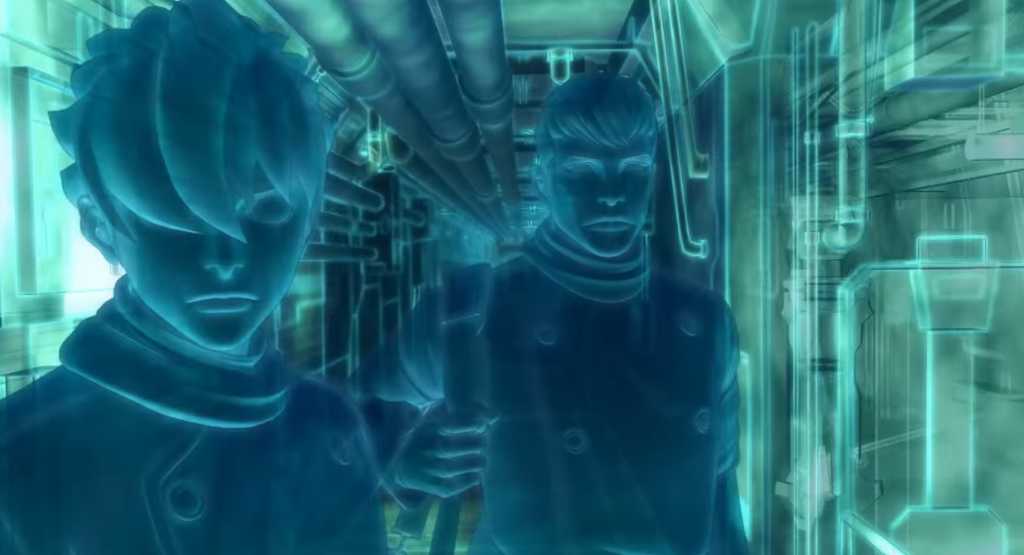
009 Re: Cyborg | Date Released: 2012 | Director: Kenji Kamiyama | Trailer
Themes: Cyborgs, Ethics, Terrorism
Synopsis: An animated film adaptation of a popular manga that follows a group of 9 people who were abducted and got turned into cyborgs. Intended to be used as weapons, they eventually rebelled against their makers and destroyed them, now working for the NSA and other groups using the superhuman abilities behind the scenes to keep global peace. In this futuristic sequel, the cyborgs working for different national security and intelligence agencies to stop a terrorist threat who is orchestrating bombings around the world.

Ergo Proxy | Date Released: 2006 | Director: Shūkō Murase | # of Episodes: 23 | Trailer
Themes: Robotics, Utopia
Synopsis: In a utopian future society where people are born in artificial wombs with preordained roles and automation through a robotic slave caste, an infection that gives the machines sentience results in a growing number of deaths. A female detective is tasted with investigating, uncovering a complex conspiracy and the existence of a new form of humanoid life that exists underneath the rigid controls of this society. Dark, suspenseful but at times plodding and overly complex, this series is very well animated for the most part. It is an excellent example of 2000’s era Japanese anime and will have plenty of genre tropes to keep most cyberpunk fans entertained.
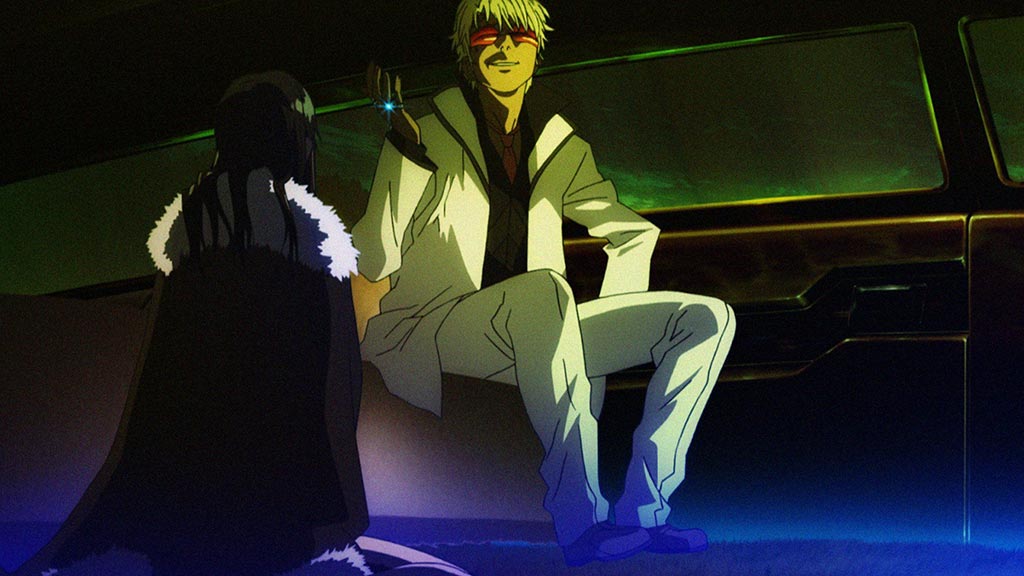
Mardock Scramble | Date Released: 2010-2012 | Director: Susumu Kudo | # of Episodes: 3 | Trailer
Themes: Cybernetics, AI
Synopsis: A prostitute is left for dead but rescued and empowered into a cyborg by a good Samaritan doctor; she then uses her new powers to go after the wealthy casino owner / criminal who did this to her (and other women). This is a very familiar narrative that audiences will have seen before, notably Battle Angel and Texhnolyze. Despite this, it has a sharp visual aesthetic, has fun, if not the most inspired, character and technology designs and for those who enjoy violent, sexualised anime involving a female cyborg assassin, this will entertain. For others, there is little new here to offer.
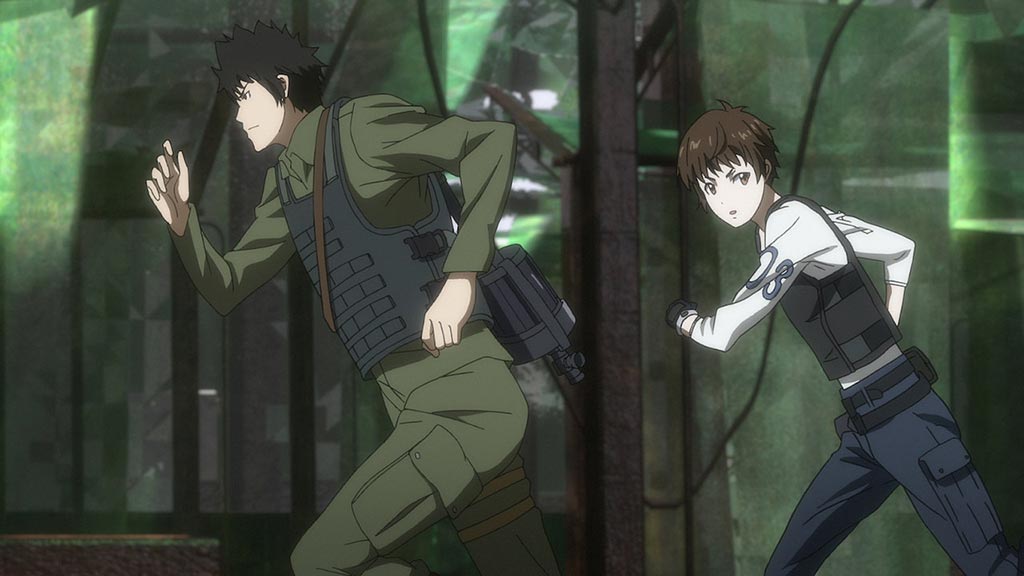
Psycho-Pass | Date Released: 2012-2020 | Director: Naoyoshi Shiotani & Katsuyuki Motohiro | # of Episodes: 41 | Trailer
Themes: Dystopia, Techno-authoritarianism, Robotics
Synopsis: This anime is set in a Japanese metropolitan dystopia where a network of biometric reading computers generates a “psycho-pass” assessment of all citizens to determine if they will commit crimes or not. Investigators determine a person’s guilt and a partner “enforcer” terminates dangerous subjects. With a visual design and soundtrack heavily inspired by Blade Runner and a setting that is a very close riff on Philip K. Dick’s Minority Report, this will satisfy the average cyberpunk fun if you enjoy anime. The computer-aided animation is quite sterile however and the character designs, melodramatic dialogue and story line are decidedly targeted at a teen aged market. The franchise is still developing with a third season aired in late 2019 and a third film slated for some time in 2020. Season 1 is widely regarded as the superior entry, and watching this would be enough to know if the rest is worth viewing.
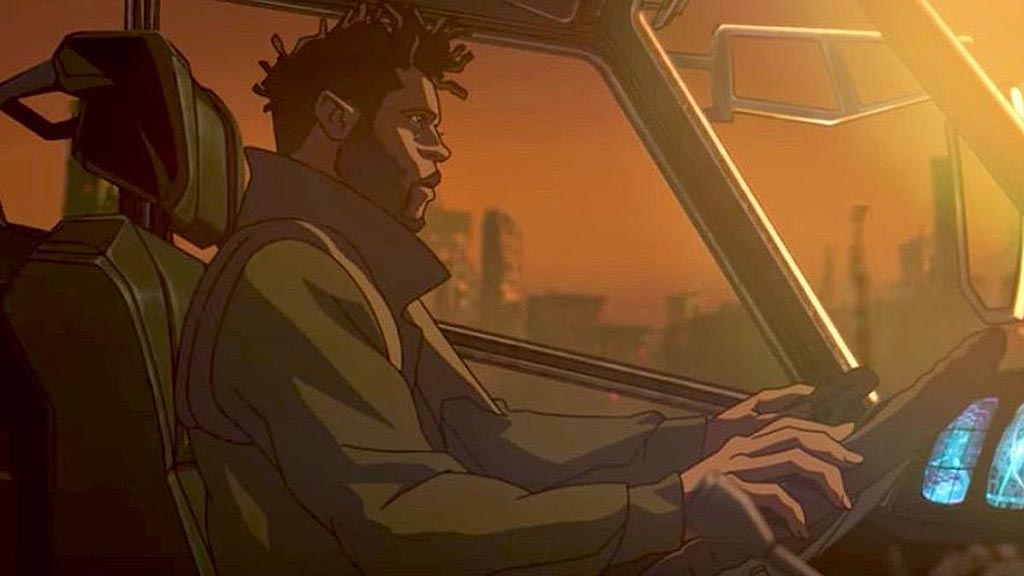
Blackout 2022 | Date released: 2017 | Director: Shinichiro Watanabe | Official Animated Short
Themes: Robotics, AI, Transhumanism
Synopsis: An animated short directed by Cowboy Bebop’s Shinichiro Watanabe, it serves as a background piece to the Blade Runner 2049 film. While only 15 minutes long and with modest animation and production values, for the fans of Blade Runner 2049, this is worth checking out.

Megalobox | Date released: 2018 | Director: Yō Moriyama | # of Episodes: 13 | Official Trailer
Themes: Cybernetics, Dystopia, Corporatism
Synopsis: This series revolves around an underdog contender in a futuristic version of boxing where fighters wear cybernetic “gear” to make the bloodsport more entertaining. The imagery and themes are reminiscent of Battle Angel Alita, but it is perhaps slightly more simplistic and with a much greater emphasis on the sport segments.
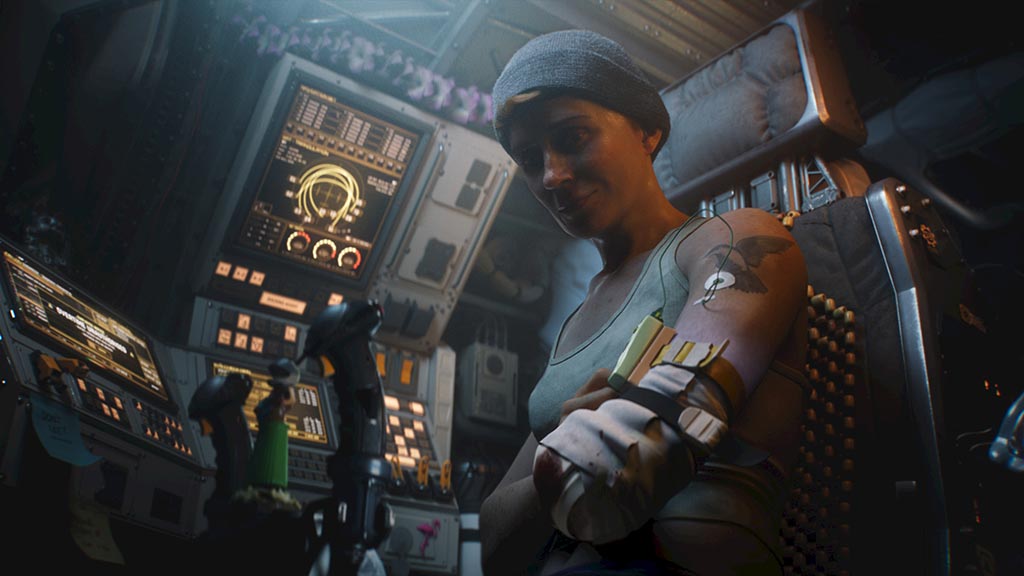
Love, Death & Robots | Date released: 2019 | Director: Various | # of Episodes: 18 | Trailer
Themes: Robotics, AI, Transhumanism
Synopsis: A Netflix animated series of sci-fi shorts produced by various directors and animation studios. Many of the stories enjoy a touch of humour, and sex, in their narratives. While the majority of episodes are more pop sci-fi, a few stand out as decidedly cyberpunk. These include: Sonnie’s Edge; Three Robots; The Witness; Good Hunting; and The Dump. The series is enjoyable to watch for the different aesthetics and some, like Three Robots, provide critique on society that while somewhat conventional and expected illustrates how humanity may develop in the future.
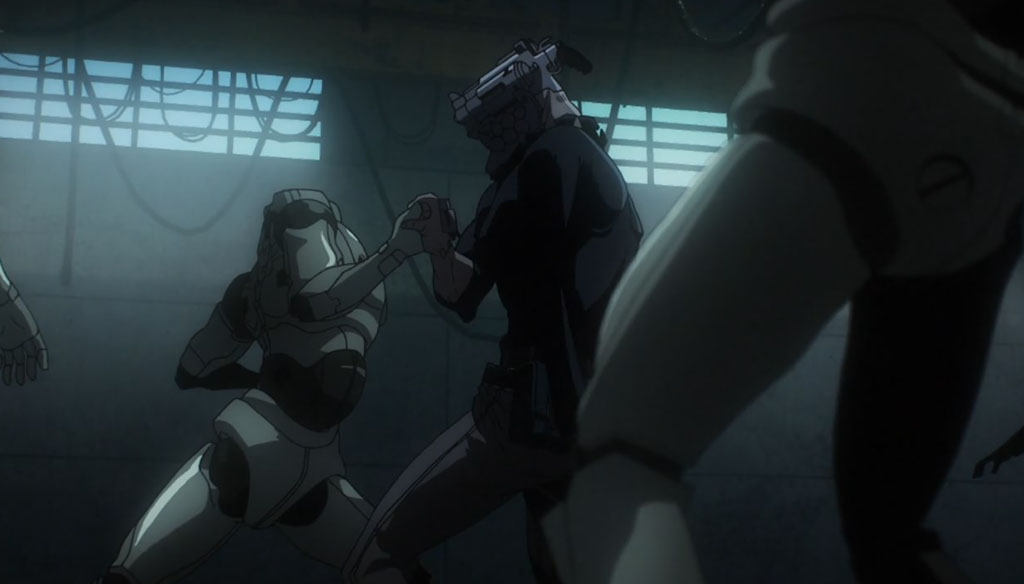
No Guns Life | Date Released: 2019-2020 | Director: Naoyuki Itou | # of Episodes: 24 | Trailer
Themes: Transhumanism, Militarisation of Cyborgs, Cybernetics
Synopsis: During a future war, soldiers were equipped with robotic parts, becoming “Extended”. Jūzō Inui is an Over-Extended, having lost his memories during his modifications, he now takes care of Extended-related incidents as a detective and agent. Also, his head is a gun. No Guns Life explores the clash between the interests of corporations, the state and the Extended themselves, each trying to acquire the edge in cybernetics. While the show does not have the beautifully hand drawn animation quality often found in older anime, No Guns Life has a unique noir retro-futuristic aesthetic that is rarely represented in today’s anime productions with dominant cyberpunk tropes.
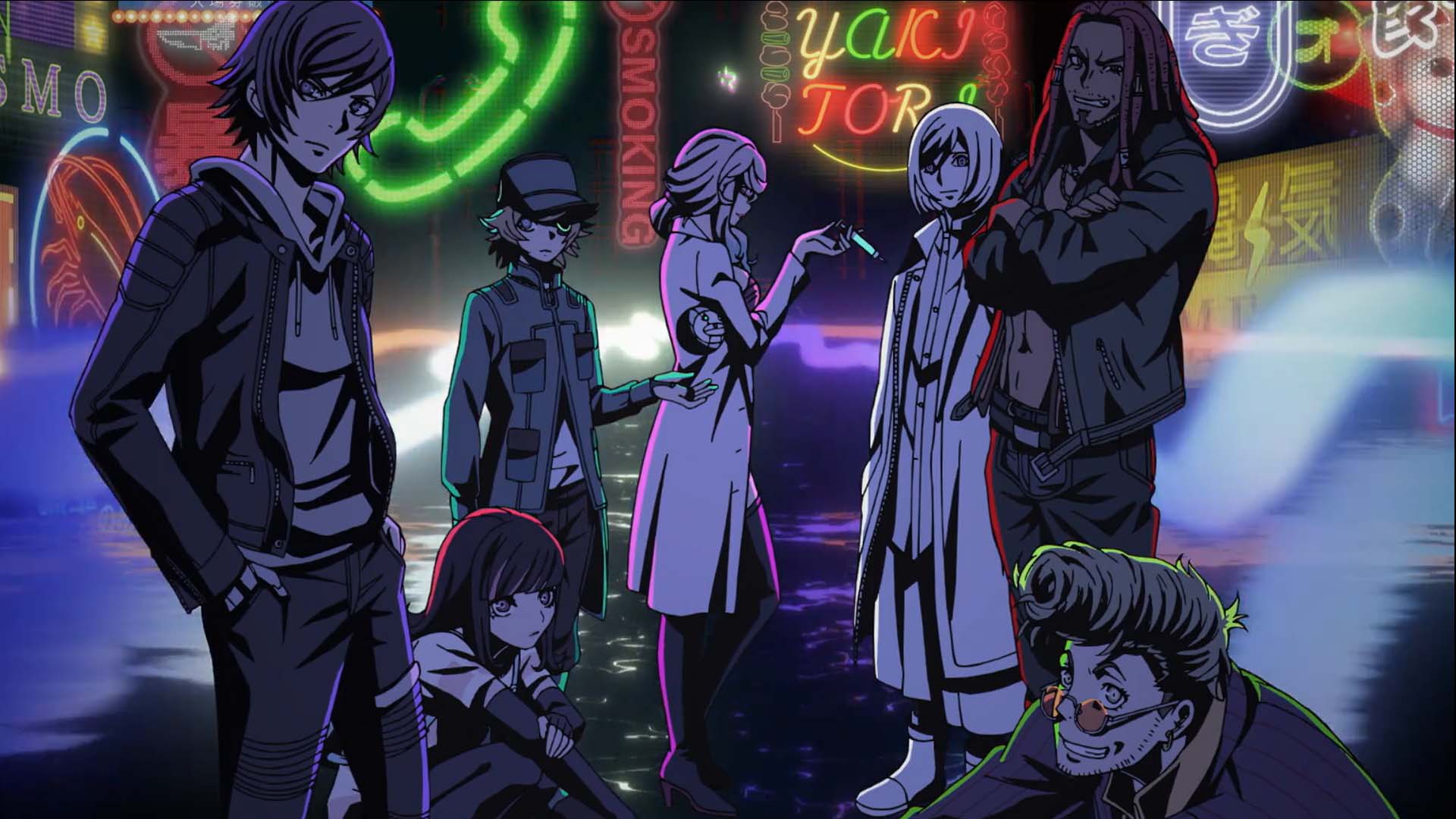
Akudama Drive | Date Released: 2020 | Director: Tomohisa Taguchi | # of Episodes: 12 | Trailer
Themes: Techno-authoritarianism, Societal disparity, Dystopia, Crime
Synopsis: “Akudama Drive” is set in a dystopian future where society is divided into two distinct regions, Kansai and Kanto, with Kanto representing the elite class and Kansai representing the lower class. The story follows a group of eccentric criminals known as “Akudama,” each with unique skills and personalities. When a mysterious job leads them to pursue unimaginable rewards, they become embroiled in a dangerous game of heists, chases, and political intrigue. With its thrilling action sequences, vibrant cyberpunk aesthetics, and morally ambiguous characters, “Akudama Drive” offers a rollercoaster ride through a high-tech, neon-lit world filled with crime and corruption. The anime explores themes of societal disparity, the consequences of technological advancement, and the blurred lines between hero and villain.
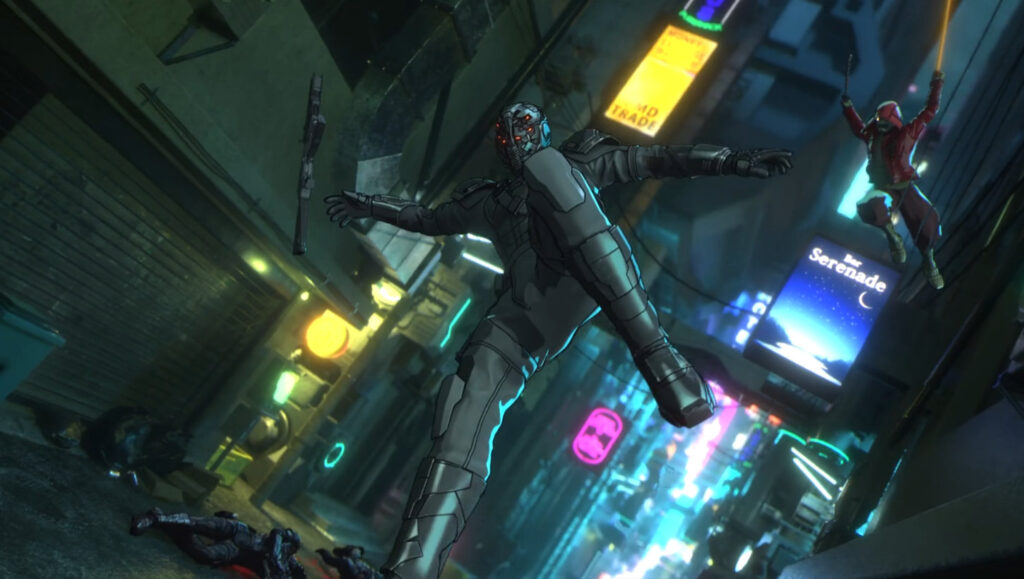
Altered Carbon: Resleeved | Date Released: 2020 | Director: Takeru Nakajima & Yoshiyuki Okada | Trailer
Themes: Transhumanism, Cybernetics
Synopsis: A Netflix 3D, cell-shaded animated movie running just under 1 hour 15 minutes, it has a Japanese audio track and is essentially a Yakuza film with a cyberpunk setting. The “sleeve” novum from Altered Carbon’s book/Netflix live action TV series remains as does the franchise’s protagonist, Takeshi Kovacs, who is now in a bleached-haired Japanese body as he navigates a case within a Yakuza clan. It is heavy on action and light on plot, and while I don’t typically enjoy 3D animations, and find the costuming and direction of this film to be on the poor side, the action choreography can be quite good at times thanks to the 3D medium. It features a bright, vivid neon Japanese setting that draws from numerous cyberpunk tropes, including a soundtrack that heavily references Ghost in the Shell (1995). There is also a wealth of cyberpunk technologies and other novum that fans of the genre will enjoy.

Ghost in the Shell: SAC_2045 | Date Released: 2020 | Director: Kenji Kamiyama & Shinji Aramaki | # of Episodes: 12 | Trailer
Themes: Transhumanism, Cybernetics, Artificial Intelligence, Private Military Companies
Synopsis: After Kusanagi left Public Security Section 9, she forms a mercanary group called GHOST. In 2045, the government utilizes AI to fight wars and GHOST partakes in these wars. After a series of incidents, encountering enhanced “post-humans”, Public Security Section 9 is re-established. This is for hardcore GITS fans only, and even then, this series was very unpopular with fans.
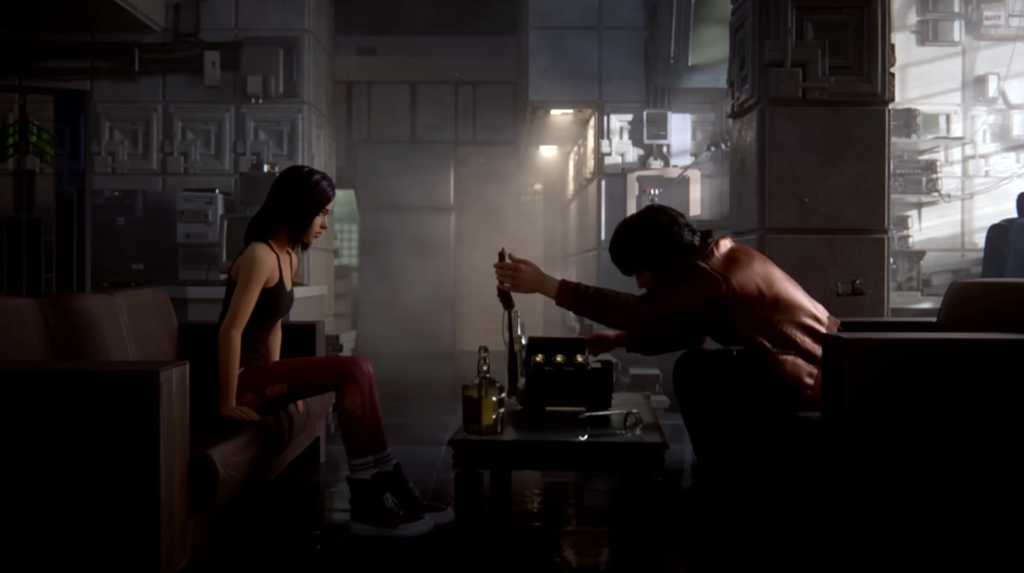
Blade Runner: Black Lotus | Date Released: 2021 | Director: Kenji Kamiyama & Shinji Aramaki | # of Episodes: 13 | Trailer
Themes: Transhumanism, Surveillance
Synopsis: No memories. Only a black lotus tattoo, an encrypted data device and the skills to kill, that’s what Elle woke up with in the Los Angeles of 2032. With parts of her memories slowly returning, she attempts to solve the mystery about her circumstances. More action packed and less thoughtful than the original film, this is more akin to GITS SAC_2045, given that they both have the same director.
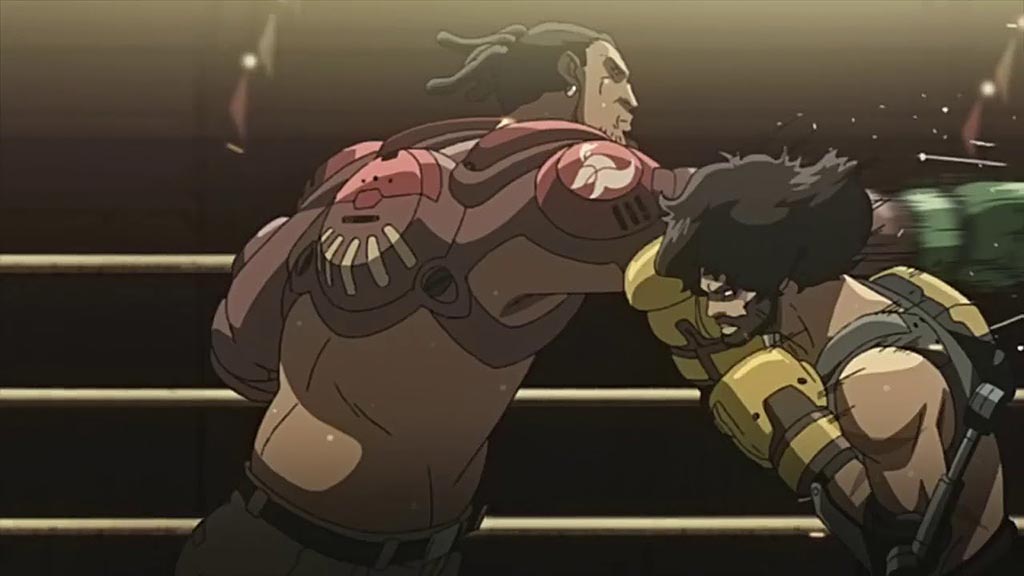
Megalobox 2: Nomad | Date released: 2021 | Director: Yō Moriyama | # of Episodes: 13 | Official Trailer
Themes: Cybernetics, Dystopia, Corporatism
Synopsis: This anime series takes place five years after the first season. The protagonist now struggles with narcotics addictions and returns to underground fighting. If you enjoyed the first season of Megalobox this is more of the same sports drama set in a cyberpunk universe.

Cyberpunk: Edgerunners | Date released: 2022 | Director: Hiroyuki Imaishi | # of Episodes: 10 | Official Trailer
Themes: Cybernetics, Dystopia, Corporatism, Transhumanism
Synopsis: A netflix-funded Japanese-produced anime adaptation of the glitch-plagued and frequently delayed Cyberpunk 2077 video game that was finally released in 2020. True to form, the English subtitles for the Japanese language track suffer from a number of technical difficulties. The animation and designs are both rather basic but if you like action-packed, graphic violence in your anime, or are a fan of the video game, then Edgerunners will definitely be of interest.

Mars Express | Date Released: 2023 | Director: Jérémie Périn | Official Trailer
Themes: AI, Transhumanism, Corporatism, Cybernetics, Robotics
Synopsis: A rare French entry to this list, Mars Express is a classic cyberpunk narrative that follows a private detective investigating a murder, taking place predominantly on a domed community on Mars with a virtually simulated sky. While ordinarily I’d argue that space travel excludes media from being a part of the rather narrow cyberpunk genre, with Elon Musk being as gun-ho as he is about the planet’s colonisation, and the fact that Mars Express riffs off perhaps every cyberpunk trope there is, from a cyborg cop trying to return home to his family (Robocop) to violent anti-service android protests (The Animatrix) to a building drop opening and male-female detective pair (Ghost in the Shell), I believe it deserves a place on this list. Surprisingly, this film is not overly dystopic and resource scarcity and overcrowding is not one of the heavy themes in this film. The focus is mostly on how sentient, but software-limited and subservient machines live in relative harmony together in highly technologically-mediated society that is not unlike our own. Now the film is not perfect. The illustration style may be a little sterile for many viewers, and the action choreography is definitely not one of the movie’s strong points, aside from a scene that looks lifted straight from Terminator 2, and the soundtrack is completely forgettable; which is a shame when there is such a glut of independent synthesizer-heavy, retrofuturistic tracks available these days. It’s strong points are that it has believable science behind its numerous novum, comprehensive world building and they have not abandoned character development. One of the film’s strongest points is that it touches on many new aspects of society’s use of technology illustrating new examples visually in the context of the detective narrative. Everything from genetically designed organic computers, lifelike robotic cats with machine washable removable fur, transhuminist sex worker androids, and a running theme of operating system “updates” impacting on humanity’s lived technologies are all covered here in fresh, and sometimes humorous, ways, to update the rather tired novum that we have seen rehashed since the 1980’s (e.g. can machines be sentient, how much of a person’s body do they need to replace before they are no longer human, and so on).
Fair Use Statement: This article contains images hosted without express permission from their copyright holders. These images are provided for illustration purposes to support an informational objective. This should constitute fair use of any such copyrighted material.
If you enjoyed this article, supporting SHELLZINE by any amount can be made via the link below. Your contribution is completely optional and all funds help cover the website’s growing hosting costs and enable further original content creation without the use of advertisements. Secure payments by all major card types, including Google Pay and Apple Pay, are supported.

